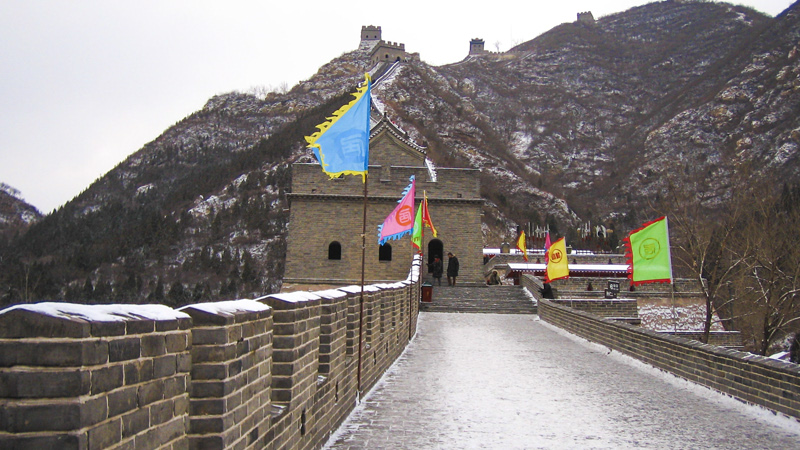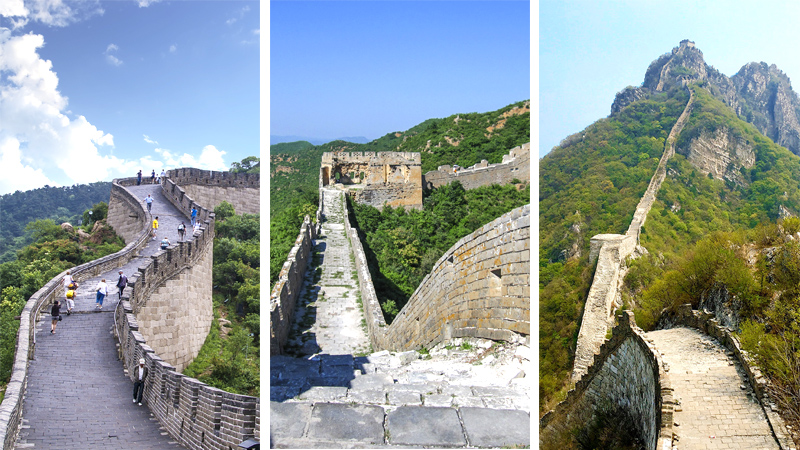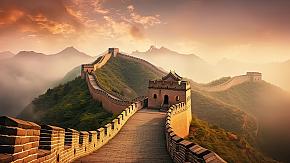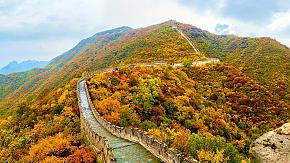Top 10 Fun Facts About the Great Wall of China
The Great Wall of China is widely regarded as one of the most important landmarks and a must-see attraction for any trip to China.
This ancient defensive wall has stood in China for thousands of years, winding its way through the rugged mountains, vast desert, lush grassland, and even beautiful coasts.
Its rich history, unbelievable length, and mysterious construction process may draw visitors to plenty of questions about it. We've listed the 10 most unexpected fun facts about the Great Wall of China you may want to know. Check them out below!
- How Long Did It Take to Build the Great Wall?
- Is It An Uninterrupted Long Structure?
- Where Does the Great Wall Start and End?
- What's the Great Wall Made of?
- What Is the Length of the Great Wall?
- Is It One of the 7 Wonders of the Ancient World?
- Can the Great Wall Be Seen From the Moon?
- Why It Was Called the Longest Cemetery?
- How Many People Were Recruited to Build it?
- Has the Great Wall Ever Been Breached?
How Long Did It Take to Build the Great Wall?
Over 2000 years! By several dynasties and kings.
It is thought that the first parts of the Wall were built as far back as 771 B.C.E., during the Spring and Autumn period (8th - 5th centuries BC).
In 221 BC, after Qin Shihuang, the first emperor in Chinese history, unified China and established the Qin Dynasty, he ordered the demolition of several sections of the city wall and built new walls to connect the retaining wall along the empire's northern frontier to defend the empire against northern invaders.
Later dynasties continued the construction by repairing, rebuilding, or expanding parts of the Great Wall, and it was revived again during the Ming Dynasty (1368 - 1644) and built a 5,500-mile stretch to keep the nomadic tribes out of the territory. Actually, the most popular sections around Beijing were built by the Ming Dynasty.
 The Juyongguan Section of the Great Wall, Built in the Ming Dynasty
The Juyongguan Section of the Great Wall, Built in the Ming Dynasty
Is the Great Wall An Uninterrupted Long Structure?
No! The Great Wall is accurately a series of walls. As we mentioned before, the Great Wall of China has different sections built by various dynasties along an east-to-west line across the northern border of ancient and imperial Chinese territories.
Where Does the Great Wall Start and End?
The Great Wall begins in the east at Shanhaiguan Pass (known as the "Old Dragon's Head") in Hebei Province. In some unique angles, you may find it just like rising from the sea.
The Great Wall extends westward from Shanhaiguan Pass and ends at Jiayuguan Pass in Gansu Province. With the desert as the background, it presents a completely different scenery.
However, the most popular and famous sections of the Great Wall are around Beijing, including:
- Mutianyu Great Wall: is surrounded by lush greenery and rolling hills, offering picturesque views. There is a cable car up and down, and it is very friendly to kids and the elderly.
- Jinshanling Great Wall: is known for its rugged and picturesque terrain, with fewer tourists and more natural surroundings.
-
Jiankou Great Wall: Unrestored State, offering visitors a more authentic and adventurous experience. Also a good choice for photography or hiking enthusiasts seeking a glimpse of the Great Wall in its original form.
 Different Sections of the Great Wall: Mutianyu (left), Jinshanling (middle), and Jiankou (right)
Different Sections of the Great Wall: Mutianyu (left), Jinshanling (middle), and Jiankou (right)
What's the Great Wall Made of?
Most parts of the Wall are built with stone, brick, tamped earth, wood, and other unremarkable materials.
But a surprising material was found in the wall - glutinous rice (sticky rice) flour! Because glutinous rice has good cohesive properties, it was used in making mortar or blinding material to bind bricks as early as the Qin Dynasty.
What Is the Length of the Great Wall?
The Great Wall of China is the longest structure ever built by humans. Including reconstructed and overlapped portions, the whole length of the Great Wall of China is about 21,196 kilometers (13,171 miles), according to an archaeological survey done by China's State Administration of Cultural Heritage.
The best-preserved section of the Great Wall is approximately 8,850 kilometers (5,499 miles) long built by the Ming Dynasty.
Is It One of the Seven Wonders of the Ancient World?
No. Most people believe the Great Wall of China is one of the Seven Wonders of the Ancient World, including the Great Pyramid of Giza, the Hanging Gardens of Babylon, the Statue of Zeus at Olympia, the Temple of Artemis at Ephesus, the Mausoleum at Halicarnassus, the Colossus of Rhodes, and the Lighthouse of Alexandria.
The truth is that it's one of the Seven Wonders of the Medieval World.
Can the Great Wall Be Seen From the Moon?
The myth that the Great Wall of China can be seen from the moon with the naked eye is untrue.
This myth dates back to two centuries before human beings could travel in space. It first appeared in the Family Memoirs, written by the English antiquary William Stukeley in 1754 and got a boost later because of other books and works. It has been debunked many times, but it is still ingrained in popular culture. Unsurprisingly, no astronaut who has set foot on the moon has ever claimed that he has seen the Great Wall from the Moon.
Some astronauts claimed they had seen the Great Wall from low Earth orbit (with an altitude between 160 and 2,000 km) with the unaided eye, but others disputed these claims. NASA claims that it is barely visible only under nearly perfect conditions.
Why It Was Called the Longest Cemetery?
The human cost of the Wall construction is huge. It has been estimated by some authors that over one million people died building the wall during the Qin Dynasty only. Human remains have been found under parts of the Wall by archaeologists. As such, the Wall has been described as the longest cemetery on Earth.
How Many People Were Recruited to Build it?
The wall's construction required the participation of almost a million people, including soldiers, commoners, and convicts.
According to estimates, 400,000 workers lost their lives while building the Qin wall. Since the work was very dangerous, it used to be a common punishment for convicts since the Qin Dynasty.
Has the Great Wall Ever Been Breached?
Yes, many times. Although the Great Wall was built to defend against invasion, some enemies throughout history have successfully penetrated it. According to legend, from 1501 to 1529, the Great Wall was breached 14 times by the Mongolian army.
Cutomize Your Trip to the Great Wall
Do you want to see the Great Wall of China with your own eyes after learning these ten unexpected fun facts? You are welcome to contact us for any inquiry or question related to planning a China Tour with the Great Wall.
What Our Clients Say
"Great Customized Service", "Trip of A Lifetime", "Exceed All Expectations"

 Different Sections of the Great Wall: Mutianyu (left), Jinshanling (middle), and Jiankou (right)
Different Sections of the Great Wall: Mutianyu (left), Jinshanling (middle), and Jiankou (right)


